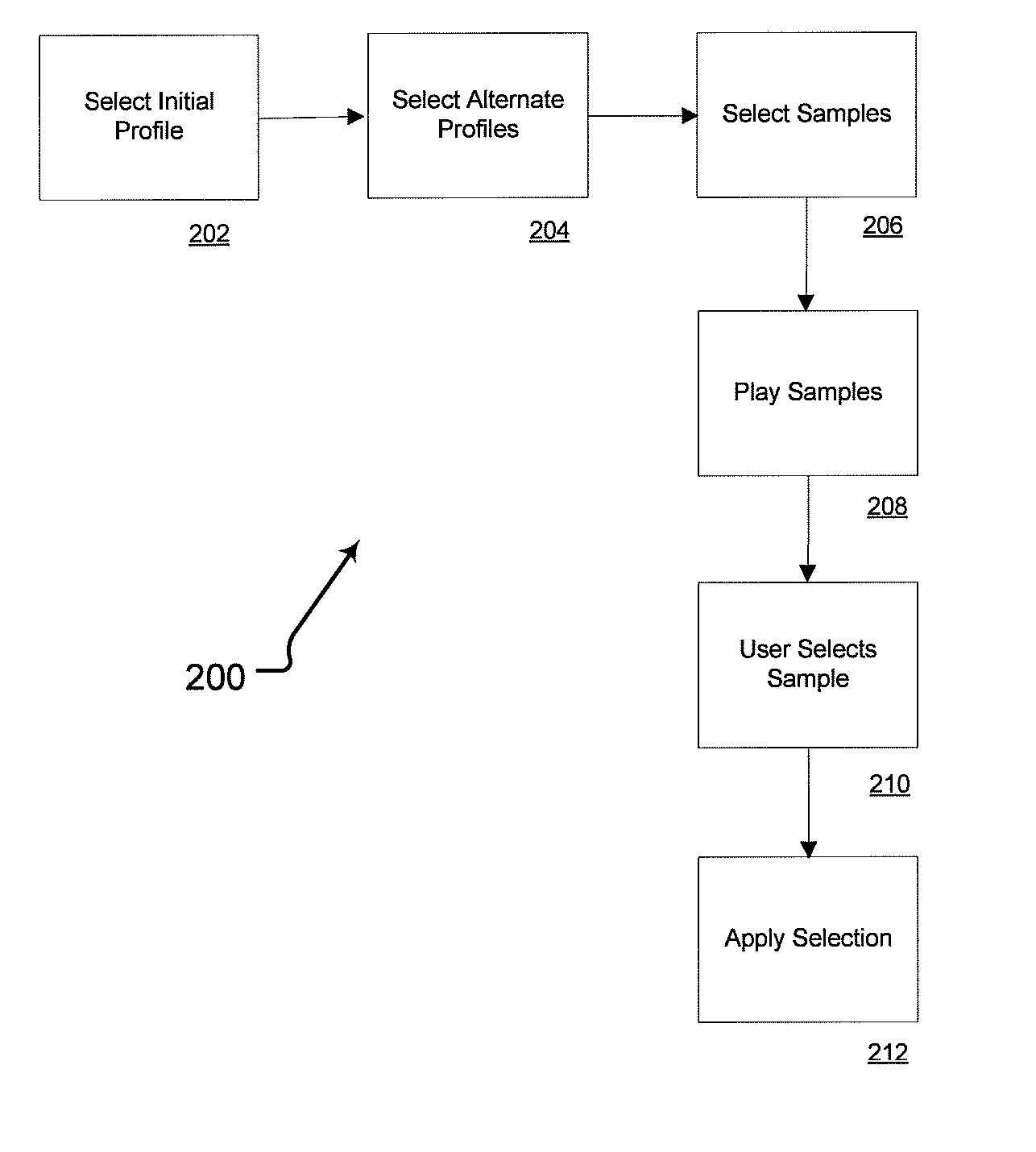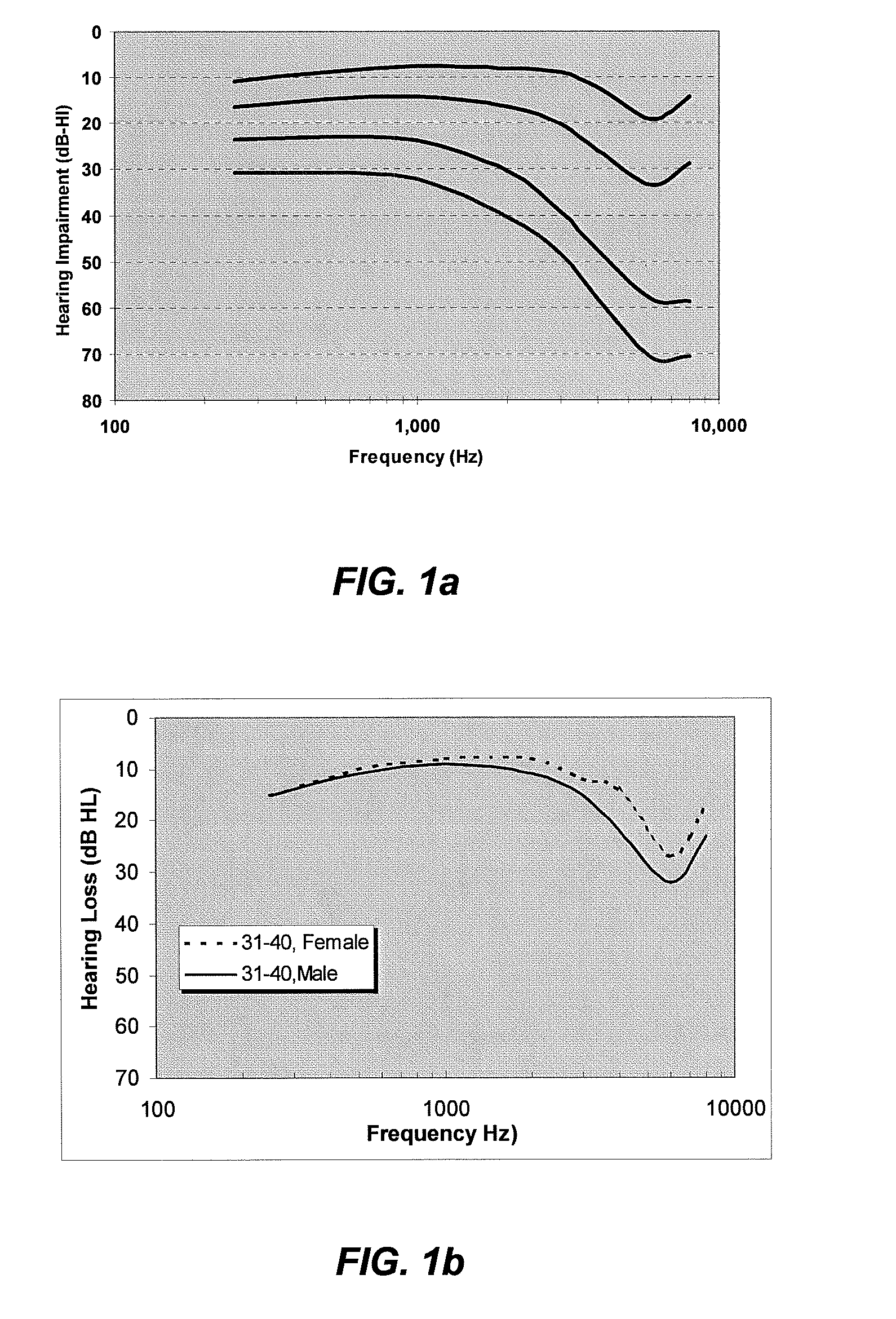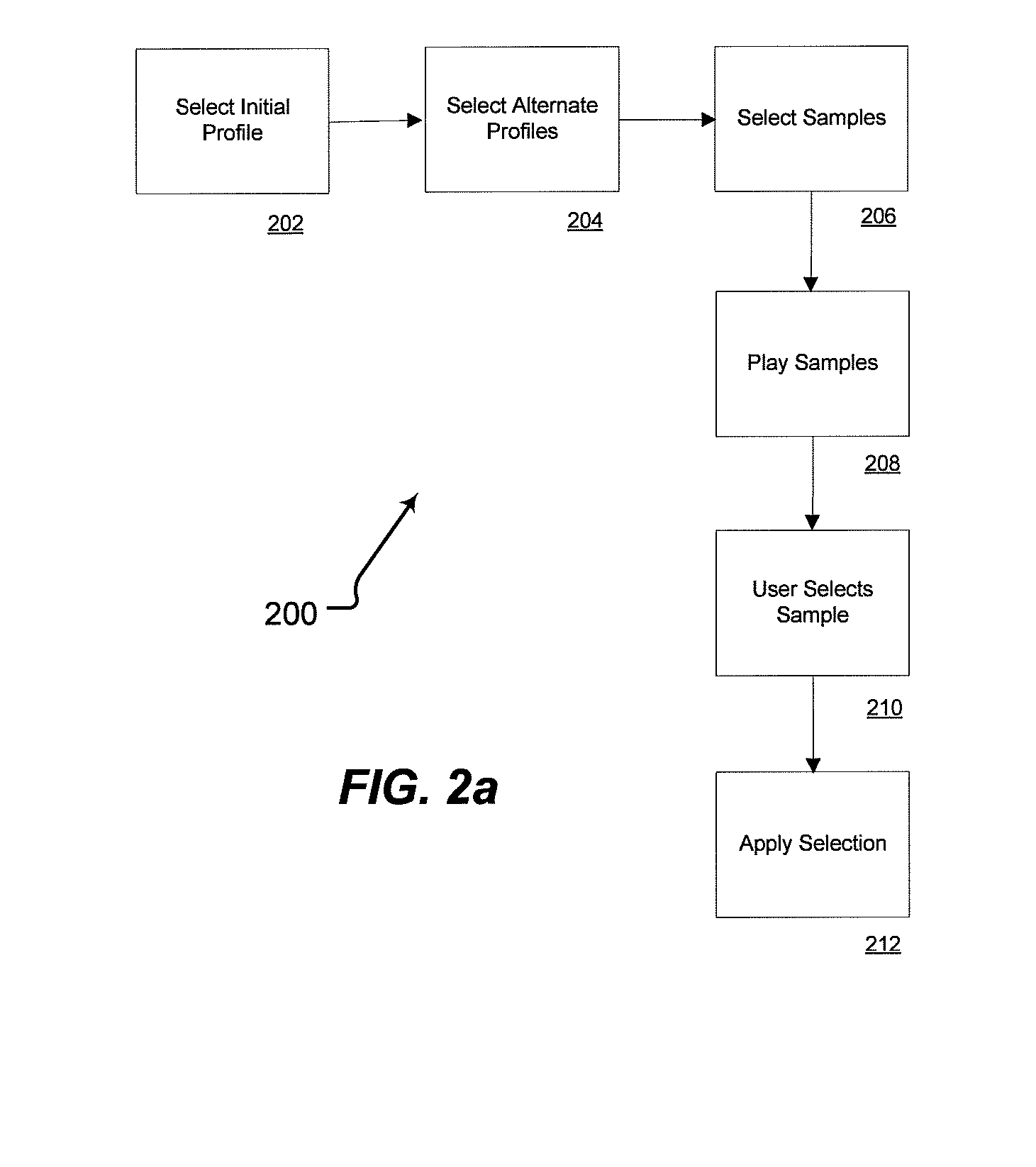Personalized sound system hearing profile selection process
a technology of personalization and hearing profile, applied in the direction of instruments, stereophonic circuit arrangements, deaf aid adaptation, etc., can solve the problems of inability to effectively and quickly generate individual hearing profiles, time-consuming and cumbersome process, and high cost of process
- Summary
- Abstract
- Description
- Claims
- Application Information
AI Technical Summary
Benefits of technology
Problems solved by technology
Method used
Image
Examples
Embodiment Construction
[0021]A detailed description of embodiments of the present invention is provided with reference to the FIGS. 1-7.
[0022]As is generally known, hearing varies among individuals. Generally, the most important measure of hearing is threshold of hearing, or hearing sensitivity, which measures hearing acuity as a function of frequency, or pitch, as shown in the charts of FIGS. 1a and 1b. Hearing profiles vary considerably among individuals, both as a generally characteristic and as the result of injury, or exposure to high level sounds of particular pitch, such as the loud high-frequency noise associated with jet aircraft engines. Profiles vary over time for individuals as well, as seen in the curves of FIG. 1a. as can be seen there, high frequency hearing drops of markedly as a person ages. Additionally, a general divergence in hearing ability between the genders has been noted, as shown in FIG. 1b.
[0023]Despite the known diversity in hearing abilities, providers of audio content have c...
PUM
 Login to View More
Login to View More Abstract
Description
Claims
Application Information
 Login to View More
Login to View More - R&D
- Intellectual Property
- Life Sciences
- Materials
- Tech Scout
- Unparalleled Data Quality
- Higher Quality Content
- 60% Fewer Hallucinations
Browse by: Latest US Patents, China's latest patents, Technical Efficacy Thesaurus, Application Domain, Technology Topic, Popular Technical Reports.
© 2025 PatSnap. All rights reserved.Legal|Privacy policy|Modern Slavery Act Transparency Statement|Sitemap|About US| Contact US: help@patsnap.com



